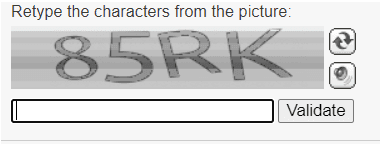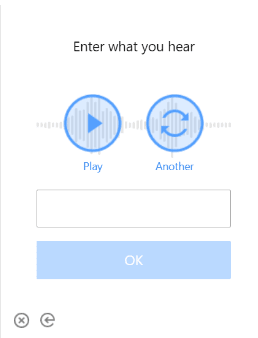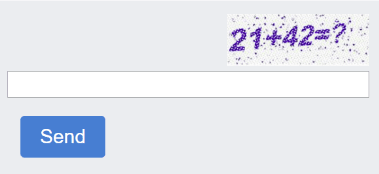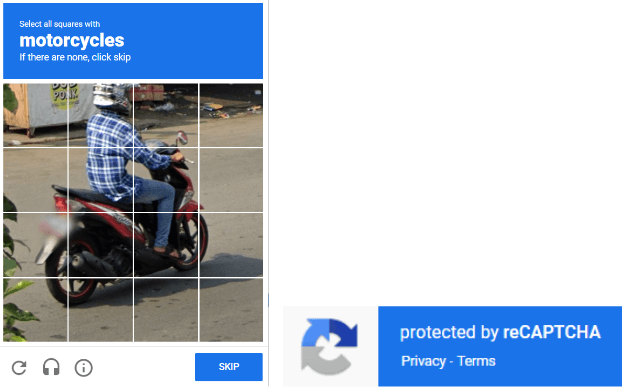How to Solve CAPTCHA While Web Scraping
A CAPTCHA is an automated test used on websites to determine whether the user is a human or a program. It is easy for a human to pass this test, but not so easy for a machine.
The intriguing word "CAPTCHA" comes from the English word "Completely Automated Public Turing test to tell Computers and Humans Apart", which translates to "Completely Automated Public Turing test to tell Computers and Humans Apart".
In 1950, English mathematician Alan Turing proposed a test to distinguish humans from computers. The test suggested that if a person could not determine the answers of a computer from those of another person, then the computer could be considered to have "artificial intelligence." CAPTCHA is based on the principles of Turing's test and is a practical application of his idea to distinguish between a human and a computer program.
CAPTCHA is needed to protect sites from automated programs used for parsing and spamming. It also protects web resources from password brute force and DDOS attacks and complicates other automation processes.
Captchas can be different, depending on how they are presented and what tasks they offer the user to accomplish. Here are some of the most common types of captchas:
Text CAPTCHAs:

The user is prompted to enter text displayed in an image, usually distorted or with added noise to make it harder for computer programs to recognize.
Graphical CAPTCHAs:

Instead of text, the user may be presented with graphical tasks such as selecting all images with a particular object or combining multiple images into a single word or phrase.
Audio CAPTCHAs:

There are captchas that, in addition to the graphical solution, offer to listen to an audio recording and enter the numbers or words that were spoken on the recording (usually distorted, with noise in the background).
Mathematical CAPTCHAs:

The user is asked to solve a simple math equation, such as adding or multiplying numbers, to confirm that they are human.
ReCaptcha:

This is a type of captcha developed by Google. It is usually a combination of tasks, such as selecting all images with a particular object.
These are just a few examples of captcha types, and developers are constantly creating new types of captchas for different purposes and security requirements.
Website scraping is the process of automatically extracting data from websites. This is usually done using special programs or scripts called web scrapers or web crawlers. The purpose of parsing can range from gathering information for analysis and research to creating a copy of content or monitoring changes to a site.
While a CAPTCHA prevents scraping, there are still numerous ways to bypass it and obtain the necessary data (if allowed by the website owner). Among these, CapMonster.cloud stands out - a cloud service for automatic CAPTCHA solving. It efficiently handles most of the aforementioned types of CAPTCHAs quickly and effectively
It provides such paths for parsing without blocking:
Using API: This allows you to send captcha images to CapMonster.cloud servers and get back the captcha solution. Developers can integrate API into their parsing scripts to solve captcha automatically.
Using libraries - Capmonster.cloud also provides their own ready-made libraries for various programming languages (e.g. Python, PHP, Javascript, and others) that simplify integration with their service.
Use of distributed solutions: the service uses distributed servers and powerful recognition algorithms, which increases the speed and accuracy of captcha solving.
Model training: the cloud server continuously improves captcha recognition algorithms by training models on large amounts of data.
Resource reservation: Capmonster.cloud provides the ability to reserve a certain amount of resources for captcha processing, which allows you to speed up the solution process and ensure reliability when parsing large amounts of data.
If in your online activities, you often find yourself needing to prove to visited sites that you or your program are human, and you are periodically denied access altogether, then it's time to consider methods to bypass this blocking.
Here are the solutions:
VPN (Virtual Private Network). This is one of the most popular ways to bypass blocking. A VPN masks your IP address, allowing you to bypass geographical restrictions and ISP blocking.
Proxy servers. Similar to VPNs, proxy servers can redirect your traffic through remote servers, hiding your real IP address.
DNS redirection. Some DNS services, such as Google Public DNS or Cloudflare DNS, can help you bypass blockades by redirecting you to available mirrors of blocked sites.
Tor (The Onion Router). Tor routes your traffic through a decentralized network of servers, providing anonymity. However, this is not the most reliable way to bypass blocking, as there are traffic analysis and attack techniques that can expose and track Tor users.
Often sites do not even offer users to pass CAPTCHA if they are satisfied with their IP address and profile. However, if scripts are used, it is most likely impossible to avoid the "humanity" check. In this case, automatic captcha-solving services can help, among which Capmonster.cloud has already successfully proved itself. It offers solutions for bypassing captchas, which can be useful when trying to access sites with automated security systems.
Previously, only manual services requiring human input were used to recognize captchas. Now modern technologies have stepped forward, and artificial intelligence is successfully used for this task.
The solution of captcha with the help of AI is usually carried out by the following steps:
Image processing. First, the captcha image is fed as an input to the algorithm. The AI goes through the image using image processing techniques such as noise filtering, segmentation (highlighting text or other elements), and pattern recognition.
Recognizing text or elements. After processing the image, the AI tries to recognize text or other elements on the captcha. Various machine-learning techniques can be used for this purpose. These models are trained on a large set of captcha data to learn how to recognize text or other elements with high accuracy.
Automated solution. After successfully recognizing text or elements, the AI decides on the correct answer to the captcha and passes this information back to the user or program that requested the captcha to be solved.
This process can vary depending on the complexity of the captcha and the AI techniques used. Typically, captchas are designed to make automatic recognition difficult, but artificial intelligence developers are constantly improving their methods to overcome these obstacles.
The cloud service Capmonster.cloud also uses AI to solve captchas and efficiently parsing sites. This tool implements various methods including machine learning. The models are constantly trained and updated, Capmonster.cloud automates the captcha-solving process, allowing users to save time and effort that they would have spent on manual data entry or finding alternative ways to bypass captchas when parsing. More information about Capmonster.cloud and its features can be found in the documentation or blog.
For the convenience of users, the service has both API and extensions for Google Chrome and Mozilla Firefox browsers, with the help of which captchas are solved automatically and in the background. On the official website, you can find out all the information, register, and test all the functionality of the Capmonster.cloud service.
Note: We'd like to remind you that the product is used for automating testing on your own websites and on websites to which you have legal access.